Home » Guide to Quitting Weed » Week 1
What to Expect During the First Week of Quitting Weed
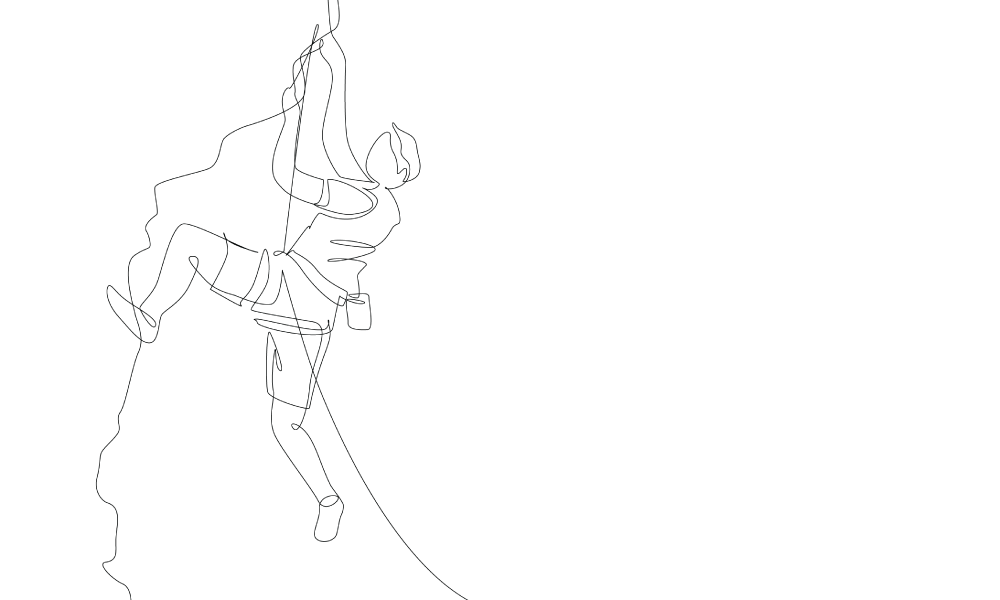
Preparing to quit or reduce
Week 1
Beginning your journey
Making progress
You’ve come a long way
Preparing for the future
Looking forward
Day 1
Beginning Your Journey
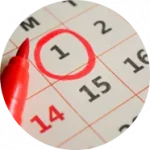 Today is the first day of your journey to quitting. Making this decision, in its own rite, is an incredibly important milestone. Congratulations on taking this initial step.
Today is the first day of your journey to quitting. Making this decision, in its own rite, is an incredibly important milestone. Congratulations on taking this initial step.
In reality, though, your journey likely started long before today as a desire for change. Whether you tried to quit before or this is your first time, there are likely a variety of reasons that brought you here—maybe your health, your job, a relationship, or something else. Take note of these reasons today—perhaps even writing them down—to serve as a reminder and inspiration to you during this month.
Over the next several weeks, cravings and withdrawal symptoms may arise. You may even begin to feel them today. Remember to be kind to yourself this month. Take every symptom one moment at a time and be sure to reward yourself for the success of powering through.
The Guide will be here to take you through these experiences day-by-day. Good luck to you, and congratulations again.
Day 2
Withdrawal: Sleep Disturbance
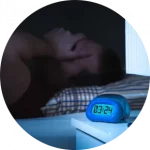 Night one down. If you are like most individuals abstaining from cannabis use, you may have had difficulty falling asleep or maybe didn’t sleep at all. You are not alone. Sleep disturbance is one of the most common withdrawal symptoms associated with cannabis cessation, occurring in up to 70% of individuals who experience withdrawal1.
Night one down. If you are like most individuals abstaining from cannabis use, you may have had difficulty falling asleep or maybe didn’t sleep at all. You are not alone. Sleep disturbance is one of the most common withdrawal symptoms associated with cannabis cessation, occurring in up to 70% of individuals who experience withdrawal1.
This is because many individuals smoke before bed, and even the most infrequent users report subjective improvement in sleep quality after smoking. However, in reality, sleep studies have shown that cannabis use actually disrupts the sleep cycle2. This can create a vicious cycle: cannabis disrupts sleep and contributes to feelings of tiredness, which motivates users to smoke more because of the perception that they achieve better or deeper sleep. You can see how this is potentially problematic and leads to increasing use.
That cycle stops here. In the process, though, your brain has to adjust to the absence of this frequent stimulus—both on a neurochemical and behavioral level if smoking was part of your bedtime routine. Improving sleep quality should be aimed at improving “sleep hygiene”, or the routine you have surrounding sleep. For instance, a sleep-promoting routine could involve a warm bath, meditation, or reading, while also keeping your room cool, dark, and quiet. Try to avoid caffeine, large meals, and screen time close to bed, as these activities can signal to your body that it should stay awake. Regular exercise can also help with sleep (more on other positive benefits later).
Overall, if you can’t sleep, don’t force it, as this can lead to more distress and insomnia. Limit time in bed to only times when you feel tired and ready. Find comfort in the fact that this is all part of the process and a symptom experienced by many.
Day 3
Withdrawal: GI Upset
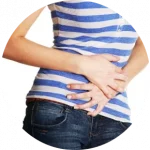 Congratulations on making it to day 3. Today and tomorrow are typically the peak of withdrawal symptoms. One of the most common withdrawal symptoms is GI upset. This can manifest as nausea, loss of appetite, or food aversion, where the thought of food seems unpalatable. Eating is one of the many human joys, and you may have enjoyed it even more with marijuana. Sitting with a wonderful plate of food in front of you, but feeling disgusted by it, can be incredibly frustrating and disappointing.
Congratulations on making it to day 3. Today and tomorrow are typically the peak of withdrawal symptoms. One of the most common withdrawal symptoms is GI upset. This can manifest as nausea, loss of appetite, or food aversion, where the thought of food seems unpalatable. Eating is one of the many human joys, and you may have enjoyed it even more with marijuana. Sitting with a wonderful plate of food in front of you, but feeling disgusted by it, can be incredibly frustrating and disappointing.
You are not alone, though. Changes in appetite can affect over 50% of users attempting to abstain1. The majority experience a decrease in appetite, but increased appetite is also reported especially later in the cessation period.
Though it may be difficult, the best way to get through this phase is to try to eat even when you’re not hungry. Try to eat smaller portions or snacks throughout the day. Your body still needs energy even if your brain isn’t passing along the message appropriately. Rest assured that your appetite will return. Make sure you give your body the fuel it needs to tackle these hurdles.
Day 4
Withdrawal: Mood Disturbances
 One of the biggest struggles throughout the entire cessation period is mood disturbances, which affect up to 75% of those experiencing withdrawal1. Early on in the process, like where you are now, mood symptoms can range from irritability and feeling on edge to depression and anxiety.
One of the biggest struggles throughout the entire cessation period is mood disturbances, which affect up to 75% of those experiencing withdrawal1. Early on in the process, like where you are now, mood symptoms can range from irritability and feeling on edge to depression and anxiety.
There are several reasons you may be experiencing these symptoms. First, irritability and anxiety are common across all substance use disorders, reflecting a shared neural mechanism underlying removal of a potent positive stimulus. Second, you may have used cannabis as a tool to mitigate the negative feelings of stress or sadness in your everyday life, making those experiences even more heightened now.
These symptoms can be quite distressing, and the desire to mitigate these symptoms is a frequently cited reason for resuming cannabis use during this early period. Stay strong, though! It may feel gloomy or even scary now, but it will pass. Try to find ways to naturally reverse these negative feelings. When feeling anxious, consider a way to relax your body (exercise, stretching, etc.), or to relax your mind with meditation or yoga. Alternatively, it may be better for you to remain social, connecting with friends, family, or support groups to quell some of the anxiety and loneliness. Speaking about what you’re feeling and having that feeling validated can provide immense relief.
Day 5
Strategies: Managing Cravings
 As you may have already experienced, cravings can be particularly intense during the early withdrawal period. What brings on a craving is entirely person- and context-dependent. Typically, cravings are more frequent in situations previously associated with marijuana or when withdrawal symptoms are especially severe. You may experience cravings at bedtime, while watching a movie, or when hanging out with certain friends, especially if those friends are high.
As you may have already experienced, cravings can be particularly intense during the early withdrawal period. What brings on a craving is entirely person- and context-dependent. Typically, cravings are more frequent in situations previously associated with marijuana or when withdrawal symptoms are especially severe. You may experience cravings at bedtime, while watching a movie, or when hanging out with certain friends, especially if those friends are high.
These scenarios may pop up more frequently during this first week of abstinence as you learn to adjust your routine. Beyond avoiding these situations altogether (which represents a different strategy we will touch on later), the best way to avoid relapse when a craving arises is to redirect your attention. In other words, keep yourself busy. Don’t let yourself sit and dwell on how much better you’d feel if you used again. You may get temporary relief, true, but if you’re on this journey, you have loftier goals.
So, what can you do to stay busy? Think of some activities you can pick up easily at home and others if you need a change of scenery. Maybe it’s reading, playing music, cooking, or exercising. Perhaps you can go on a walk or meet up with friends who support you. Whatever you choose to occupy yourself with, it will help you stay busy and stay clean.
Day 6
Neurobiology: Your Brain During Withdrawal
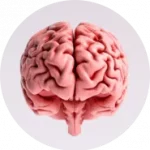 By now, you have likely experienced some form of withdrawal symptoms. You may be wondering why you feel so terrible or be tempted to use again to alleviate these symptoms. Though it won’t address your symptoms directly, it may help to understand the neurochemistry underlying withdrawal and, consequently, how returning to cannabis would be a setback on a neurochemical level.
By now, you have likely experienced some form of withdrawal symptoms. You may be wondering why you feel so terrible or be tempted to use again to alleviate these symptoms. Though it won’t address your symptoms directly, it may help to understand the neurochemistry underlying withdrawal and, consequently, how returning to cannabis would be a setback on a neurochemical level.
THC, the main psychoactive component of marijuana, signals in your body through a series of receptors, termed cannabinoid receptors (CB1 and CB2). CB1 is primarily expressed in the brain, while CB2 is present on peripheral nerves and immune cells. Your body naturally produces several compounds that are similar in structure to THC and signal through these same receptors. Collectively, these signaling pathways are referred to as the endogenous cannabinoid system (ECS). Though not completely understood, the ECS is now thought to play an important role in the maintenance of sleep, mood, appetite, and memory. When you smoke, THC stimulates changes in all these domains to create the experience of being high.
The withdrawal symptoms you have experienced are a direct consequence of these previously desired effects of THC. Consistent smoking leads to continued stimulus through the CB receptors, and in response, your body naturally downregulates their expression on cells over time as a protective mechanism. After you quit, the strong THC stimulus was removed, and only your endogenous cannabinoids were left to signal through a diminished number of receptors. This results in dampened ECS activity and thus dysregulation in sleep, mood, appetite, and other bodily functions, which creates the syndrome of withdrawal.
Rest assured, though, these changes are not permanent. In fact, withdrawal symptoms signify that your brain is re-equilibrating back to baseline. Although it may be tempting to smoke to alleviate these symptoms in the short-term, it would ultimately be a setback to all the progress both you and your brain have made so far. Stay strong.
Day 7
Strategies: What to Do if You Relapse
 Today’s topic hopefully doesn’t apply to you, but if it does, it’s okay. Please keep reading. This discussion is included early on not because of a lack of faith you, but because relapse in the first week is incredibly common due to the frequency and severity of withdrawal symptoms. If it happens, we hope you choose to see this as a minor hiccup on the road to abstinence, rather than a defining attribute or a character flaw. This should not prevent you from achieving your ultimate goal.
Today’s topic hopefully doesn’t apply to you, but if it does, it’s okay. Please keep reading. This discussion is included early on not because of a lack of faith you, but because relapse in the first week is incredibly common due to the frequency and severity of withdrawal symptoms. If it happens, we hope you choose to see this as a minor hiccup on the road to abstinence, rather than a defining attribute or a character flaw. This should not prevent you from achieving your ultimate goal.
If you do relapse, take this time to be honest with yourself about what happened. Reflect on what worked and what didn’t. First, think about what went well. What support systems did you have in place? What interventions helped with cravings? What activities did you enjoy and helped you stay busy? Take note of these winning strategies and keep these up.
After this, dig a little deeper and think about what drove you to relapse. When did the decision that resulted in your relapse actually get made? Could the situation have been avoided altogether or did something unexpected pop up? Were the withdrawal symptoms overpowering? Did you reach out for support when you needed? How can you strategize and plan for these occurrences in the future?
Again, if relapse happens, don’t beat yourself up. As the saying goes, relapse is part of recovery. The Guide will be here for you when you’re ready to do it again.
Preparing to quit or reduce
Week 1
Beginning your journey
Making progress
You’ve come a long way
Preparing for the future
Looking forward

Are you a regular marijuana user that has recently stopped using?
Currently, little data exists on heavy marijuana use and withdrawal. Weedless.org is collaborating with researchers to explore this topic and others. We have created a short, completely anonymous questionnaire which we will use to focus our future research efforts. You may skip any questions that make you feel uncomfortable and you are free to withdraw at any time. At the end of the survey, you will be given the option to anonymously share your responses with the Weedless.org community.
